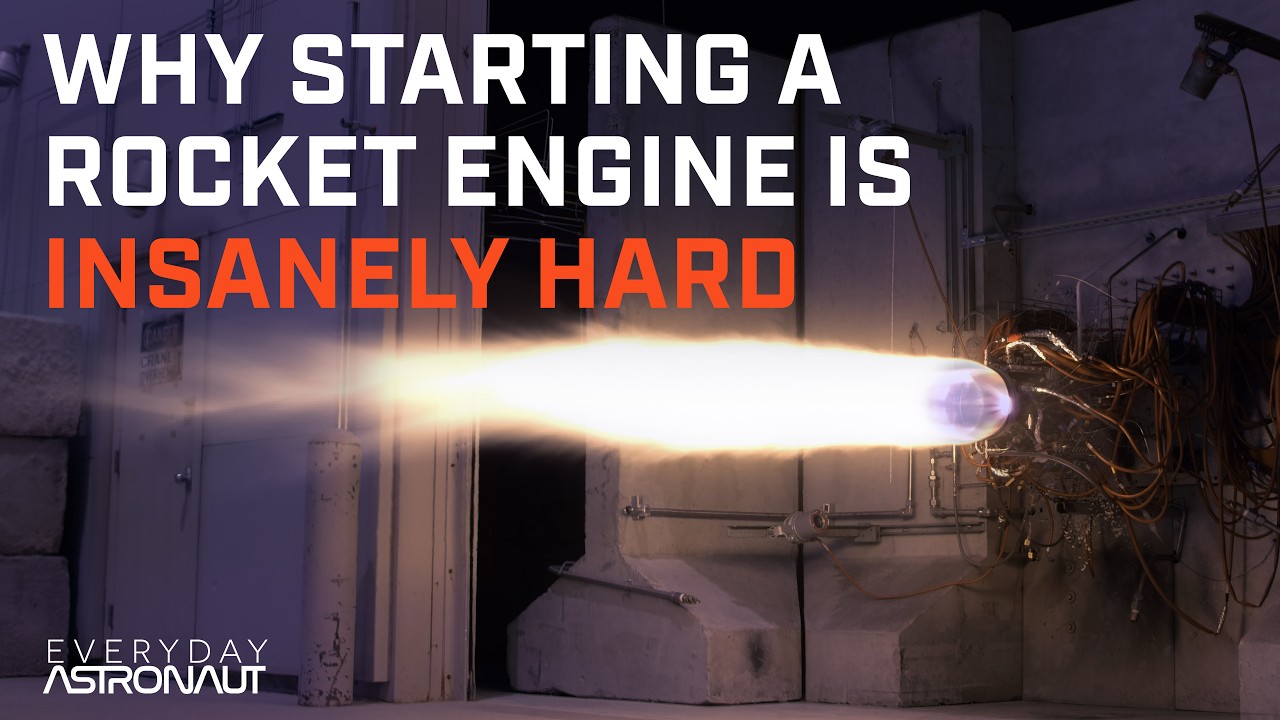Why Starting A Rocket Engine Is So Hard!
Unleash Your Creative Genius with MuseMind: Your AI-Powered Content Creation Copilot. Try now! 🚀
Introduction: A Journey into the Heart of Rocket Engines
Buckle up, my fellow space enthusiasts, as we embark on a thrilling journey into the mesmerizing world of rocket engines. Today, we'll be diving deep into the startup process of these magnificent machines, with a particular focus on two legendary engines: the RS-25 and the Raptor. Get ready to witness the dance of open loop to closed loop control, where adjustments are made based on pressures and temperatures. So, fasten your seatbelts and let's ignite the engines of knowledge!
Section 1: The Birth of a Rocket Engine
Imagine a world where rocket engines are born. It all begins with a spark of inspiration, a dream to conquer the vastness of space. Engineers and visionaries come together, fueled by a passion to push the boundaries of human exploration. And thus, the RS-25 and Raptor engines were born, destined to propel us towards the stars.
Section 2: The Dance of Open Loop to Closed Loop Control
Now, let's dive into the heart of the startup process. Picture this: the engines are dormant, waiting patiently for their moment to shine. As the countdown commences, the engines transition from open loop control to closed loop control. But what does that mean?
In the open loop phase, the engine operates based on pre-determined settings, like a choreographed routine. It follows a set pattern, with no real-time adjustments. But as the engine roars to life, it enters the closed loop phase, where it becomes a master of adaptation.
During closed loop control, the engine's sensors come alive, monitoring pressures and temperatures with hawk-like precision. It's like a symphony of data, with each instrument playing its part to ensure optimal performance. The engine analyzes this data and makes real-time adjustments, fine-tuning its operation to perfection.
Section 3: The Complexity of a Reliable Startup Sequence
Ah, the startup sequence, a delicate ballet of complexity. Achieving a reliable startup is no easy feat. It requires meticulous planning, countless hours of testing, and a dash of luck. The engine must overcome various challenges, like managing the flow of propellant, igniting the combustion chamber, and stabilizing the thrust.
But wait, there's more! Throttling and shutting down the engine add another layer of complexity to the mix. Throttling allows the engine to adjust its thrust, like a skilled dancer gracefully changing their pace. However, it's not as simple as pressing a button. Throttling must be carefully controlled to avoid damaging the engine or compromising the mission's success.
Shutting down the engine is equally crucial. It's like the grand finale of a performance, where the engine gracefully bows out. But this too requires finesse. The engine must shut down smoothly, avoiding any sudden jolts or vibrations that could jeopardize the mission.
Section 4: Learning from the Past and Testing for the Future
As we marvel at the intricacies of rocket engine startups, it's essential to remember the lessons learned from past experiences. Each engine failure has paved the way for innovation and improvement. Testing plays a vital role in ensuring safe operation, allowing engineers to uncover potential issues before they become catastrophic.
In the pursuit of perfection, rocket engines have come a long way. From the visionary minds of Leonardo da Vinci and Aristotle to the brilliance of Elon Musk and Marie Curie, the torch of progress has been passed down through the ages. We stand on the shoulders of giants, ready to reach for the stars.
Conclusion: Igniting the Flames of Exploration
And so, my fellow adventurers, we reach the end of our journey into the startup process of rocket engines. We've witnessed the mesmerizing dance of open loop to closed loop control, marveled at the complexity of a reliable startup sequence, and embraced the importance of learning from the past.
As we look towards the future, let us remember the words of Nelson Mandela: "It always seems impossible until it's done." The exploration of space may seem like an insurmountable challenge, but with each startup, each ignition, we inch closer to the impossible becoming possible.
So, let us continue to dream, to innovate, and to push the boundaries of human potential. The flames of exploration burn within us, waiting to be ignited. And who knows, perhaps one day, it will be our engines that roar to life, propelling us towards the stars.

Related Recaps
- Lý do TP.HCM nóng từ sáng tới đêm | VTC14
- The Satisfied Soul (Day 2) | Prayer 365 LIVE x Pastor Enrique Brooks
- Yu Chang crushes a fastball for a grand slam in WBC, a breakdown
- LATEST F1 NEWS | George Russell, Max Verstappen, Charles Leclerc, and much more
- 🚨 CHELSEA TRIO OUT! DIER SAYS YES, ARDA GULER LOAN…